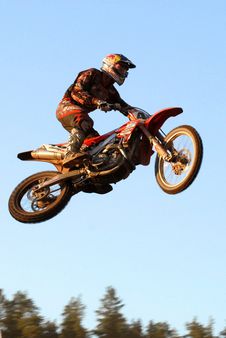One of the most useful setting mode in DSLR cameras is seldom used by amateurs, mainly due to poor information on its possibilities.
This semi-automated mode, indicated by a "S" (for shutter) or "Tv" (in case of Canon, from "Time value") sets the time that the shutter is open. This way, we can decide how long will light be entering to the sensor surface. This setting can be adjusted (depending on brand and model) from 30 seconds down to 1/8000th of a second in some professional cameras.
The camera will previously analyze the proposed composition, and then decide the matching aperture so that the total light amount will be the "right" one.
As a reference value, you should choose fraction values similar to those of the focal length, taking into account the multiplication factor introduced in some cameras with a sensor smaller than the base 35mm film one. For example, my Canon 500D, with an APS-C sensor size, will give a factor of 1.6, so that for a kit lens of 55mm shutter speed should be faster than 1/88 (then, 1/100 or 1/125) to avoid blurred images.
Basics
- A slow shutter time (under the reference value) will produce blurred images, but this may be the desired effect (water spring or cascade pictures...). This forces the use of a tripod and (typically) the use of closed aperture (diaphragm)values, so that most objects (foreground, background...) result focused in the final image.
- A fast shutter speed (above the reference setting) will "freeze" any movement, so this is used for action or sports photography, for example.
Advanced concepts...
- As fast speeds force more open diaphragm setting, focal range is reduced, so that the subject is separated from the background (and foreground, if present). Sample photography shows a fast subject in focus on a blured background...
- Blurred images can give a personal touch to pictures, if static objects (will come out focused) are combibed with other moving ones...

Originally posted on Jan 25th, 2012 (Over-Blog)


No hay comentarios:
Publicar un comentario